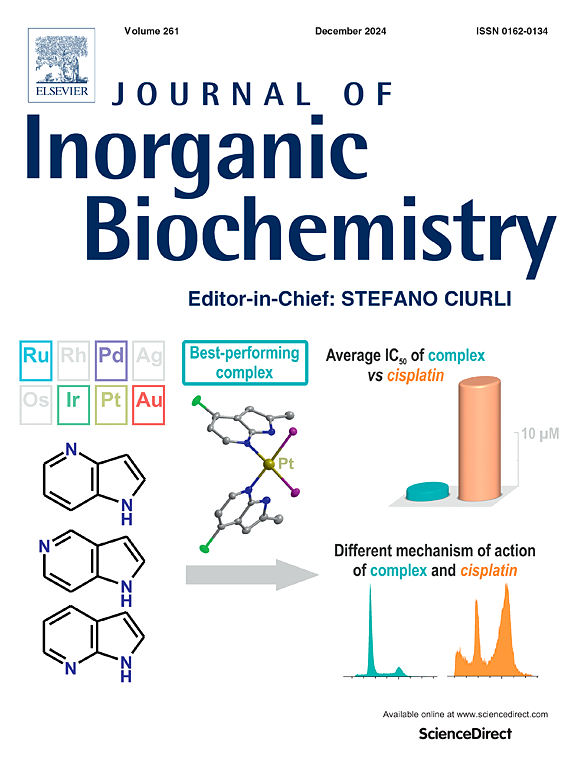NRVS of FeS cluster proteins & models – A bestiary of nifty normal modes
IF 3.8
2区 化学
Q2 BIOCHEMISTRY & MOLECULAR BIOLOGY
引用次数: 0
Abstract
Iron‑sulfur clusters are the primordial prosthetic groups for living systems, and they have even been proposed as partly responsible for the origin of life. They play a role in essential biological processes such as electron transfer, enzyme catalysis, DNA replication and repair, small molecule sensing, iron homeostasis, apoptosis, and human health and disease. They have frequently been studied by resonance Raman, electron paramagnetic resonance, and Mössbauer spectroscopies. Over the past two decades, we have used a synchrotron method called Nuclear Resonance Vibrational Spectroscopy (NRVS) to examine the vibrational dynamics of a wide variety of Fe![]() S clusters in model systems and native proteins, ranging in complexity from single Fe sites in small rubredoxins to the [7Fe-9S-C-Mo-R-homocitrate] cluster in nitrogenases.
S clusters in model systems and native proteins, ranging in complexity from single Fe sites in small rubredoxins to the [7Fe-9S-C-Mo-R-homocitrate] cluster in nitrogenases.
FeS簇蛋白的NRVS &模型-一个漂亮的正常模式的字典
铁硫团簇是生命系统的原始修复群,它们甚至被认为是生命起源的部分原因。它们在基本的生物过程中发挥作用,如电子转移、酶催化、DNA复制和修复、小分子传感、铁稳态、细胞凋亡和人类健康和疾病。它们经常通过共振拉曼,电子顺磁共振和Mössbauer光谱进行研究。在过去的二十年里,我们使用了一种称为核共振振动光谱(NRVS)的同步加速器方法来检查模型系统和天然蛋白质中各种各样的Fe簇的振动动力学,其复杂性从小红霉素中的单个Fe位点到氮酶中的[7fe - 9s - c - mo - r -高柠檬酸盐]簇。
本文章由计算机程序翻译,如有差异,请以英文原文为准。
求助全文
约1分钟内获得全文
求助全文
来源期刊

Journal of Inorganic Biochemistry
生物-生化与分子生物学
CiteScore
7.00
自引率
10.30%
发文量
336
审稿时长
41 days
期刊介绍:
The Journal of Inorganic Biochemistry is an established international forum for research in all aspects of Biological Inorganic Chemistry. Original papers of a high scientific level are published in the form of Articles (full length papers), Short Communications, Focused Reviews and Bioinorganic Methods. Topics include: the chemistry, structure and function of metalloenzymes; the interaction of inorganic ions and molecules with proteins and nucleic acids; the synthesis and properties of coordination complexes of biological interest including both structural and functional model systems; the function of metal- containing systems in the regulation of gene expression; the role of metals in medicine; the application of spectroscopic methods to determine the structure of metallobiomolecules; the preparation and characterization of metal-based biomaterials; and related systems. The emphasis of the Journal is on the structure and mechanism of action of metallobiomolecules.
 求助内容:
求助内容: 应助结果提醒方式:
应助结果提醒方式:


